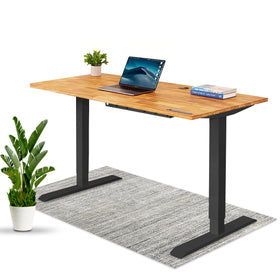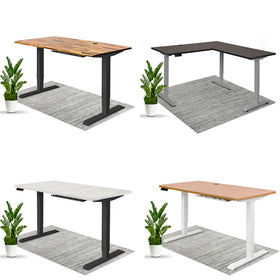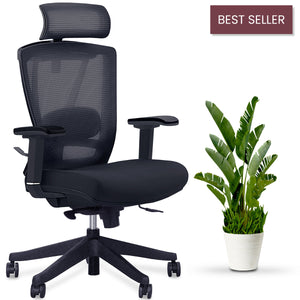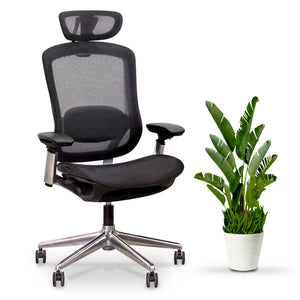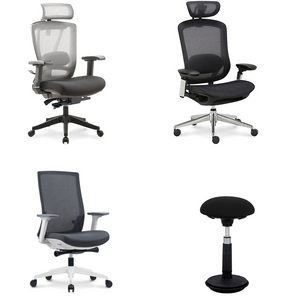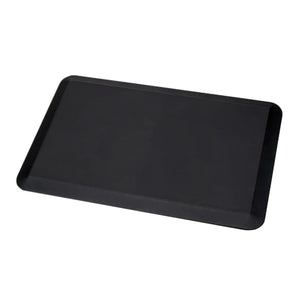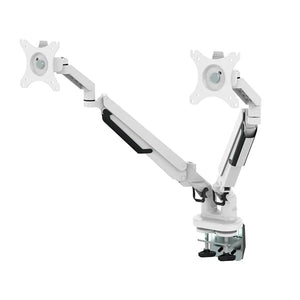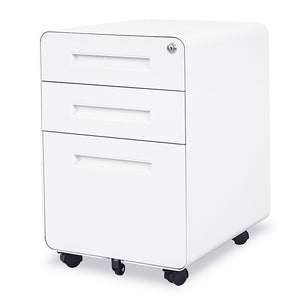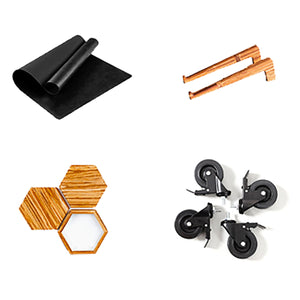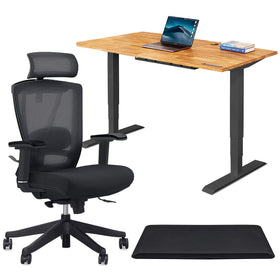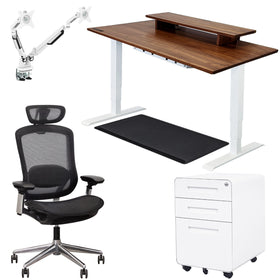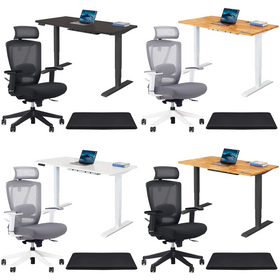
6 Tips to Relieve Computer Elbow Pain from Typing at Work
Do you suffer from “computer elbow”? This is the term coined for a pain in your elbows that comes from spending all day typing at your desk.
It’s no surprise that this sort of elbow pain is affecting more and more people. Statistics show that the average Canadian spends about 3.5 hours online every day, and individuals from ages of 18-34 spend nearly 5 hours online every day.

What is “Computer Elbow”?
You may have heard of “tennis elbow” - an umbrella term that describes pain on the outside of the elbow caused by repeated motions and excessive strain on the elbow tendon. “Computer elbow,” tennis elbow, or “golfer’s elbow” are all forms of tendonitis, or tendon inflammation classified as Repetitive Strain Injuries (RSI) that can affect you whether you’re outdoors swinging a racquet or club, or sitting in your office.
“Computer elbow” is a result of chronic exhaustion of the muscles in your arms, by working prolonged periods of time in the same posture, holding a computer mouse or typing on your keyboard. This leads to pain when you don’t get adequate rest or support.
When your “computer elbow” flares up, you may feel:
- Pain and tenderness in your forearm and elbow
- Slight swelling in the elbow
- Weakness and inability to grip an object, like a cup or doorknob
This pain, also known as lateral epicondylitis, can be caused by a number of factors.
- Overuse
- Improper posture
- Repeated bending
Cubital Tunnel Syndrome
Do you have a different kind of elbow pain? Instead of pain and tenderness in your arm, you may feel a numbness or tingling sensation in your fingers, particularly your ring and pinky fingers.
This is cubital tunnel syndrome, a result of a bent elbow continually pressing on your ulnar nerve, which runs along the outside of your elbow joint. Since your ulnar nerve controls feeling and movement in your hands, continual compression of this nerve can lead to loss of sensation in your fingers.

Also known as ulnar nerve entrapment, this pain can come from:
- Leaning on your elbow for a long time
- Keeping your elbow bent
- Hitting your “funny bone”
So, How do I Relieve Elbow Pain While I’m at Work?
Important note: While these simple home treatments may help you manage your pain at work, seek proper medical advice if your symptoms worsen. NSAIDS like ibuprofen or asprin can help reduce inflammation or pain temporarily but if your elbow pain is severe, your doctor may prescribe injections (for example, steroid injections), ultrasonic procedures, or surgery to help damaged tendons.
Six Tips To Help You Relieve Pain At Work
1. Rest
This might come as no surprise, but the quickest way to relieve pain at work is to take breaks as frequently as you can. If you know a certain repetitive movement is causing you pain, try and find workarounds to reduce the strain as much as possible.
If your pain comes from prolonged typing, make sure you take structured breaks to ensure your elbows get the rest they deserve. Look into alternate typing methods that don’t involve your arms--a good speech-to-text software, for example. A program such as Dragon Naturally Speaking can even be configured to perform tasks by recognizing your vocal commands.
2. Temperature Treatments
Ice your elbow to reduce inflammation and swelling. You can use an ice pack, a bag of ice cubes, or even a bag of frozen peas. This will relieve the pain in your elbow in a pinch!
To promote blood flow in the affected area, you can use a heat pack or a hot water bottle in combination with the ice packs. Just make sure that neither the hot or cold treatments are causing your arm to go completely numb! The idea is to use temperature to relieve pain, not to completely numb the area.
3. Desk Stretches
Try some easy desk stretches to loosen the tendons in your wrist and forearm. Remember to approach these exercises with caution, especially if your elbow already hurts! Stop these stretches immediately if you feel acute discomfort while performing them.
These stretches can help strengthen your arms and prevent tennis/golf/computer elbow. Hold each stretch for 10 seconds each. Find the complete elbow stretch guide and complete instructions here!

4. Correct Your Posture
Make sure you’re sitting correctly, so that your elbows aren't cramped up at your desk. The Canadian Centre for Occupational Health and Safety recommends maintaining a 90-120 degree angle with your elbow. Keeping a neutral stance when you’re typing will take some of the stress off your elbow!

5. Self Massage
To release tension, try a simple self-massage on your elbows. This might be tricky if you’re trying to massage your dominant arm with your non-dominant arm, but give it a shot anyway!
Try some simple massages that involve friction to relax your muscles, such as the “duck grip” massage. Check out the other massages here!

Some self massages depend on finding pressure points in your arm, and working out the kinks in these nerve bundles. Read more about trigger point massages here.
6. Prevention
Finally, here are some things you can do to prevent pesky elbow pain from coming back in the future. As the old saying goes, prevention is better than cure.
Keep a neutral posture while you’re working. Relax your shoulders and drop your wrists. If this causes your wrists to be uncomfortable, try a gel wrist pad or support to make your typing surface more comfortable.
Make sure your fingers are in line with your wrists and the rest of your forearm. If you’re working with your wrists tipped upwards, this can create tension in your forearm or elbow.
Keep everything in close reach so you don’t have to reach for something repetitively throughout the day. Computer elbow is an RSI, so make sure to keep your repetitive motions to a minimum!

Lastly, strengthen your joints and muscles with simple exercises. Exercises like these will build up your resistance to elbow pain and help you regain any range of motion you may have lost due to this RSI.
What Can You Do To Prevent Other Desk Job Related Pains?

Whether you’re working with back pain, have sore feet from standing at your desk, or looking to improve circulation from your desk, EFFYDESK is here to help!
At EFFYDESK — we design, mould, and deliver the best Electric Standing Desk for professional or personal use. As a Canadian ergonomic home office furniture company, we help thousands of remote workers and WFH-enthusiasts get more done, more comfortably.
Our award-winning ergonomic office chairs ensure that office workers are protected against desk job damage, and are well-equipped to maximize efficiency and morale in the workplace — wherever that may be for you. Browse our signature Standing Desks, Office Chairs and Monitor Mounts designed to boost workplace productivity. Claim your 30-day free trial today.
To learn more about EFFYDESK’s products and services, be sure to check out our FAQ page or browse the blog archive for other helpful articles on ergonomics in the workplace.







